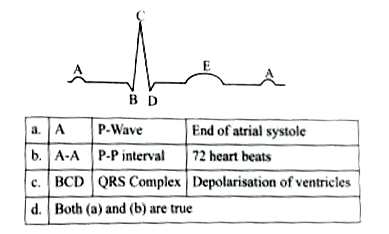For the process :
A(g)+e−→A−(g)ΔH=−aand A−(g)→A(g)+e−ΔH=+b
Select correct option
Ionisation energy of A−(g)=a
Second Ionisation energy for A(g) = a
Ionisation energy of A−(g) is =−b
Electron gain enthalpy of A(g) = b
The correct Answer is:C
Moles of sulphur in Al2(SO4)3=3.2/32=0.1
Moles of Al2(SO4)3=0.1/3
Moles of Al=2×0.1/3=0.2/3
Weight of Al=(0.2/3)×27=1.8g
Topper's Solved these Questions
Similar Questions
Consider the following ionization steps :
M(g)→M+(g)+e−,ΔH=100eV
M(g)→M2+(g)+2e−,ΔH=250eV
Select correct statement(s) a)I.E.1 of M(g) is 100eV b)M+(g)→M2+(g)+e−,ΔH=150eV c)I.E.2 of M(g) is 250eV d)I.E.2 of M(g) is 14=150eV
View SolutionA+(g)→A(g)ΔH=−2eV
2A(g)→2A+(g)ΔH=x Find the value of x in eV.
View Solution
Knowledge Check
For the process
X(g)+e−→X−(g),ΔH=x and
X−(g)→X(g)+e−,ΔH=y Select correct alternate :AIonization energy of X−(g) is yBElectron affinity of X(g) is xCElectron affinity of X(g) is -yDAll are correct statementsConsider the following ionization steps :
M(g)→M+(g)+e−,ΔH=100eV
M(g)→M2+(g)+2e−,ΔH=250eV
Select correct statement(s)AI.E.1 of M(g) is 100eVBM+(g)→M2+(g)+e−,ΔH=150eVCI.E.2 of M(g) is 250eVDI.E.2 of M(g) is 14=150eVIn the process , Cl(g)+e−ΔH−−→Cl−(g), ΔH is
ApositiveBnegativeCzeroDunpredictable
Select the correct option w.r.t E.C.G ?

View SolutionConsider the following ionization stesps:
M(g)otM+(g)+e−, ΔH=+100eV
M(g)→M2+(g)+2e−, ΔH=+250eV
Select correct statement(s),
View SolutionConsider the following ionization steps:
M(g)→M+(g)+e−,ΔH=+100eV
M(g)→M2+(g)+2e−,ΔH=+250eV
Select correct statement(s):
View SolutionConsider the following reactions
(i) A(s)→A(g):ΔH1
A(g)→A+(g):ΔH2
A+(g)→A2+(g):ΔH3
then according to the given information, select the correct statement(s)
View SolutionConsider the following ionization steps :
M(g)→M+(g)+e−,ΔH=100eV
M(g)→M2+(g)+2e−,ΔH=250eV
Select correct statement(s) a)I.E.1 of M(g) is 100eV b)M+(g)→M2+(g)+e−,ΔH=150eV c)I.E.2 of M(g) is 250eV d)I.E.2 of M(g) is 14=150eV
View Solution
